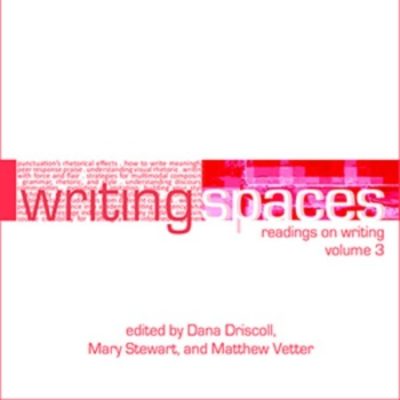8 William T. FitzGerald’s Writing with Force and Flair
Writing Spaces Volume 3
The article explains how figurative language is necessary to create quality writing in academia, suggesting that a writer who can effectively incorporate such ideas demonstrates their expertise, much like a painter or chef. It provides definitions and examples of rhetorical figures such as expression and patterns, using historical writings to demonstrate their effectiveness. Instructors can use the article, the discussion questions, and the activities provided by the author to help students understand that there is no set definition for academic writing. The author offers suggestions for ways students can generate this kind of writing, using techniques such as Fieldwork, Analysis, Imitation, and Copia (Plenty). The information indirectly introduces students to this idea of voice and that their work, while still must convey a purpose, should be written in a way that demonstrates their own unique writing style and ability.
“If we are not careful, writing with force and flair comes across as mere show–in the useful figure of cliche, all hat and no cattle. Or as any cook can tell you, a little nutmeg goes a long way. To extend this culinary analogy, rhetorical figures may be likened to a spice rack, without which writing cannot be anything but bland. What is needed is the right combination of spices as a matter of both taste and tradition.”
MLA Citation Examples
Works Cited
Fitzgerald, William T. “Writing With Force and Flair.” Writing Spaces: Readings on Writing Volume 3, edited by Dana Driscoll, Mary Stewart, and Matthew Vetter, Parlor Press, 2020, pp. 52-64.
In-text citation
“If we are not careful, writing with force and flare comes across as mere show—in the useful figure of cliché, all hat and no cattle. Or as any cook can tell you, a little nutmeg goes a long way. To extend this culinary analogy, rhetorical figures may be likened to a spice rack, without which writing cannot be anything but bland. What is needed is the right combination of spices as a matter of both taste and tradition” (57).
APA Citation Examples
References
Fitzgerald, W.T. (2020). Writing with force and flair. In Dana Driscoll, Mary Stewart, and Matthew Vetter (Eds.), Writing Spaces: Readings on Writing, vol. 3 (pp. 52-64). New York: Parlor Press.
In-text citation
“If we are not careful, writing with force and flare comes across as mere show—in the useful figure of cliché, all hat and no cattle. Or as any cook can tell you, a little nutmeg goes a long way. To extend this culinary analogy, rhetorical figures may be likened to a spice rack, without which writing cannot be anything but bland. What is needed is the right combination of spices as a matter of both taste and tradition” (p. 57).
Chicago Citation Examples
Bibliography
Fitzgerald, William T. “Writing With Force and Flair,” in Writing Spaces: Reading on Writing Volume 3, ed. Dana Driscoll, Mary Stewart, and Matthew Vetter, (New York: Parlor Press, 2020), 52-64.
In-text citation
“If we are not careful, writing with force and flare comes across as mere show—in the useful figure of cliché, all hat and no cattle. Or as any cook can tell you, a little nutmeg goes a long way. To extend this culinary analogy, rhetorical figures may be likened to a spice rack, without which writing cannot be anything but bland. What is needed is the right combination of spices as a matter of both taste and tradition” (Fitzgerald, 2020, 57).


